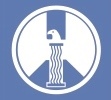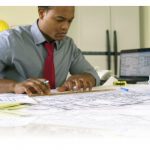
Practice Matters
Architecture is the art and science of designing buildings and the person who practices Architecture is called an Architect. Architects ensure that the buildings they design are functional, safe, and meet the needs of the people who will use them.
Architects also assist their Clients in selecting suitable contractors for their building and during construction they inspect the works to ensure that the builders strictly follow the design and specified materials as well as meeting the acceptable work quality standards. In Zambia the practice of Architecture is regulated by the Zambia Institute of Architects under Cap 442 of the Laws of Zambia.
The history of Architecture goes back thousands of years ago, when man created primitive shelters for protection from the environment. However with the environmental concerns becoming more and more important to many, most Architects now ensure that their buildings have as much reduced impact on the environment as possible, both at design and during the construction stages and when is use after completion.
An Architect is engaged by a Client to design buildings who give the Architect an idea of what he wants. He then starts the designing process where some Architects use old fashioned pencils and tracing papers during this process, while most them now use some type of computer aided design (CAD) software.
In Zambia the Copperbelt University (CBU) offers a five year Bachelors of Art Degree in Architecture. The O level subjects generally required to pursue the Architectural programme are English, Maths, Geography and some Sciences. Background in Technical Drawing may provide an advantage but is not necessarily a requirement.
The degree programme includes courses in Architectural History and Theory, Building and Environmental Design, Structures, Building Technology and Construction Methods, Professional Practice, Analytical Maths and Surveying. Cardinal to the Architectural programme is the Design Studio, where students apply principles and theories learnt in the other courses to present design concepts, drawings and three-dimensional models of their projects.
After completion a Graduate Architect undergoes internship training for at least two years under the supervision of a Registered Architect. This is necessary for one to be considered for registration by ZIA. The Graduate Architect is thereafter expected to sit for the Professional Competence Examination after which they are admitted to the Institute.
Employment opportunities for Architects are available at Private Practicing Firms, Buildings Department, Ministry of Education, Ministry of Health, National Housing Authority, National Heritage and many Other Parastatal Organisations like ZNBS. One can also set up their own Firm or join existing practising architects to set up Partnerships.
DENNIS HANZOKA NYEKELE
ZIA Honorary Treasurer (2014 -16)
dennisnyekele@zia.org.zm



